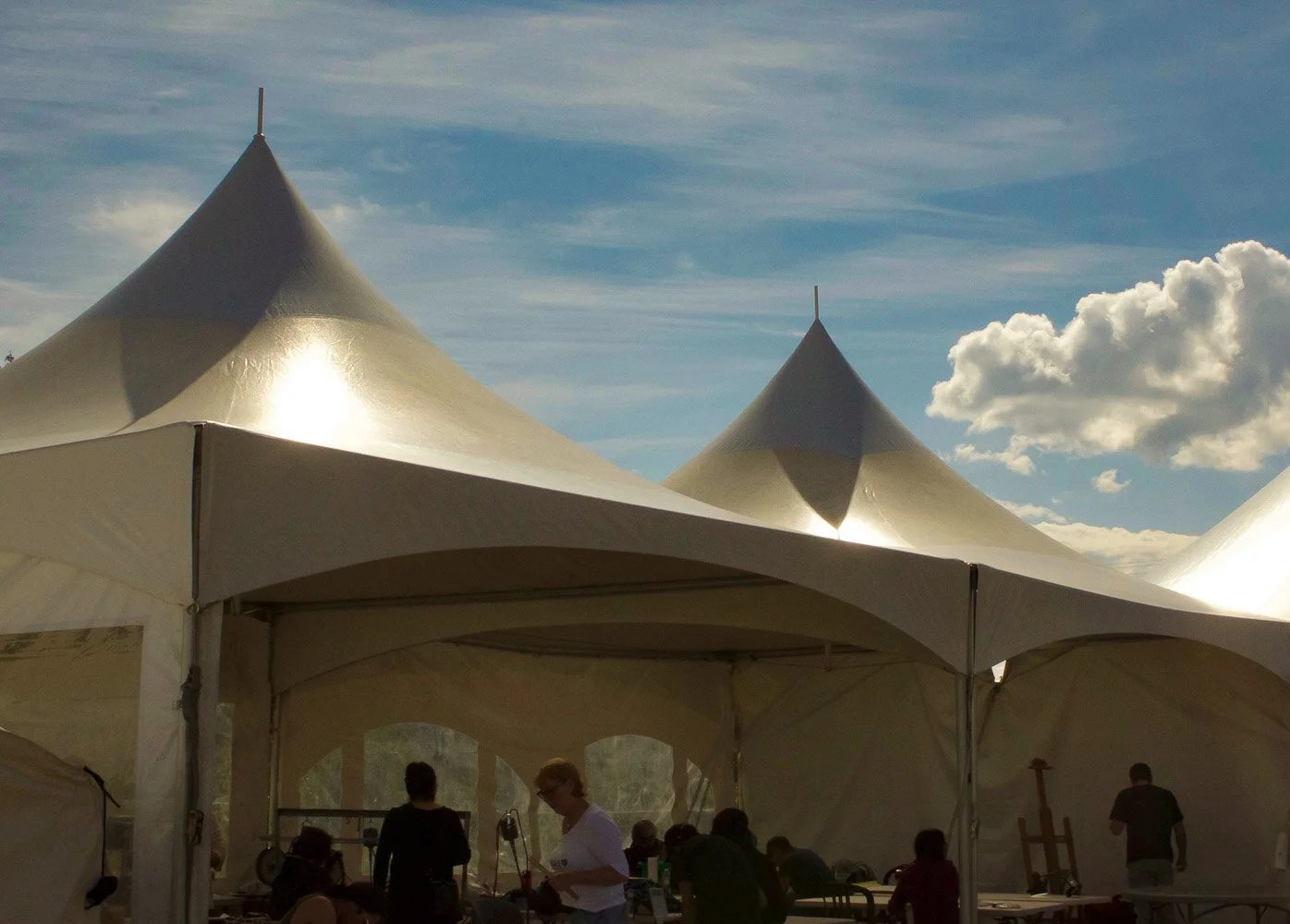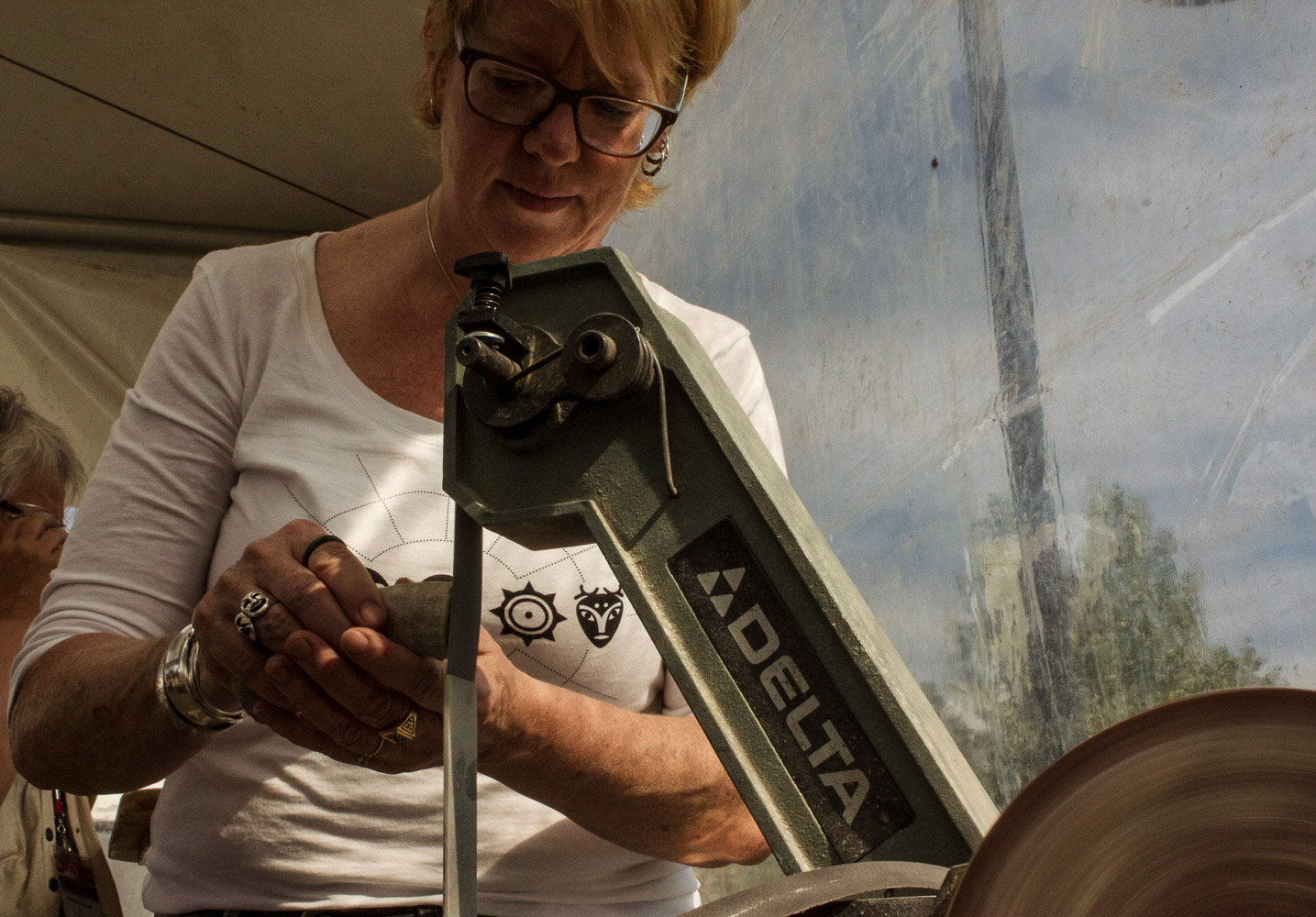The “Woman’s Knife”
Lisa Johnson
At the workshop tents at the Adäka Cultural Festival in Whitehorse on July 4, participants came to make a practical work of art that also connects them to traditional Inuit culture: the Woman’s Knife, or Ulu.
George Roberts, a master knife maker based in Whitehorse, teaches the daylong workshop.
Workbenches are decked out with wrenches, drills, sanders and specialized rotary bits for fine carving.
Roberts has been making knives for hunters, fishers and collectors since 1978. While this workshop only lasts the day, Roberts says most of the knives he makes take him up to 20 hours to make.
Roberts describes the best way to carve the handle of an Ulu. Today, they will be made out of surgical steel blade, brass stem, and a handle of wood or caribou antler.
After cutting it into short sections, Whitehorse resident Arlene MacIsaac uses a belt sander to fashion a knife handle out of caribou antler. The dust that soon covers the table saw looks like dark sawdust, but “smells like corn on the cob,” she says.
Roberts cuts a thin, long groove into a section of antler that was harvested in Nunavut. It will be the handle of on Alaskan-style Ulu.
Some of the participants wear a mask while carving with rotary tools to protect their lungs from the fine dust of caribou bone.
Brass stems have an oval shape to keep from twisting or turning in the handle. MacIsaac is carving this stem into the shape of an Inukshuk, but some are also cut into the shape of a leaf or branch.
The Ulu is called the Woman’s Knife because it was traditionally used for gendered work. Men hunted large game, and women used the Ulu to prepare the hide, meat and innards – “all the yum yum,” Roberts explains.










